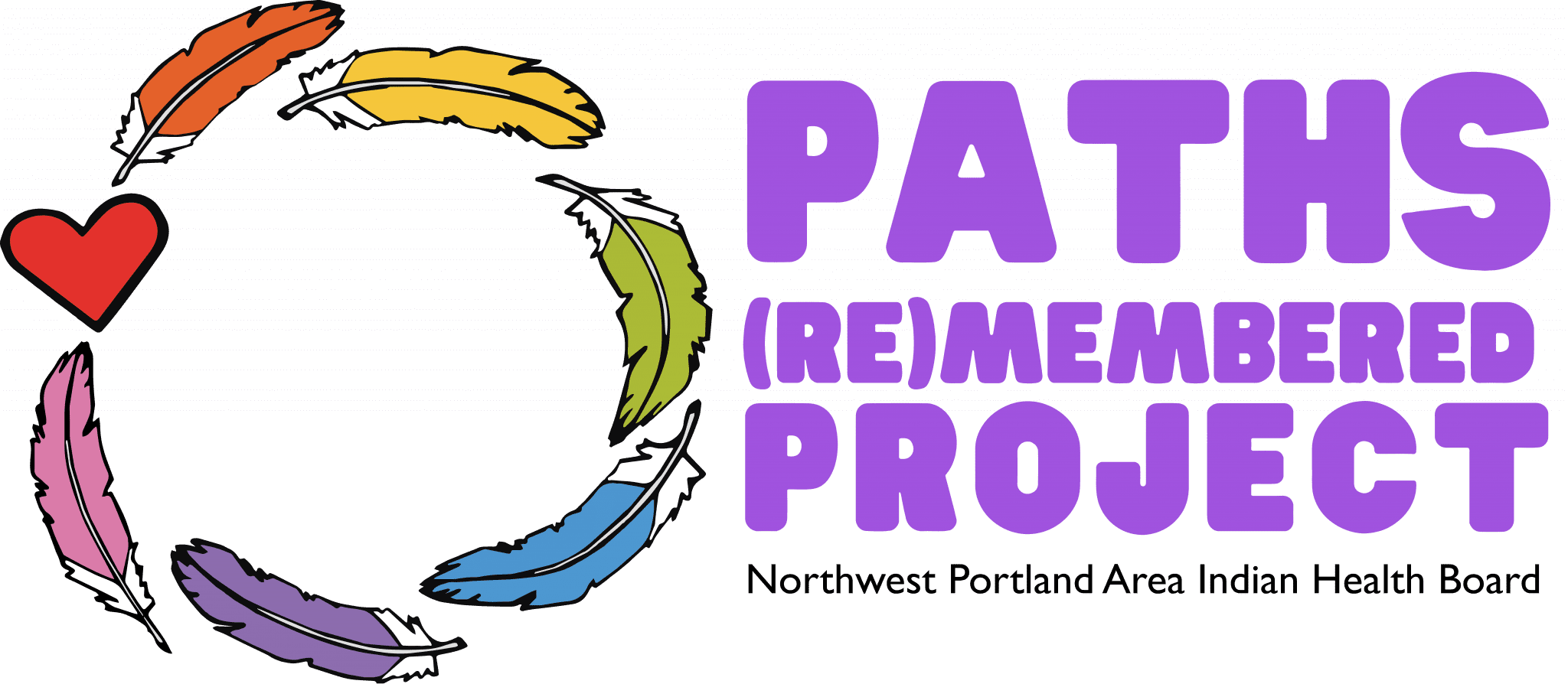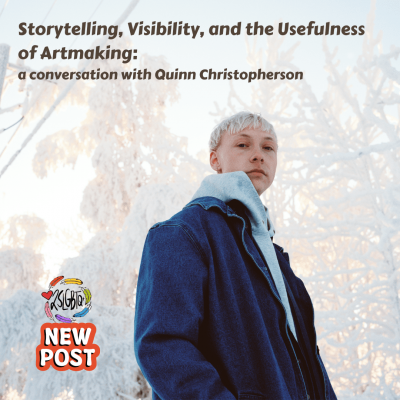I’m Quinn Christopherson. I’m a singer/songwriter from Anchorage, Alaska, born and raised. I’m Athabascan and Inupiaq. I have lived in Anchorage most of my life. Right now I’m on the East Coast while my partner goes to school.
The songs on your first album “Write Your Name in Pink” are united by threads of personal storytelling. Where does the storytelling come from? Do you relate it at all to Inupiaq or Ahtna Athabaskan traditions?
I started writing songs to be like my grandma, who was a storyteller. It’s just what we did to pass time. She would tell stories over and over, and rarely repeat them. There were so many. It gave me an interesting way of recalling life and moments, because while it’s easy to remember the big things that happen in our lives, my grandma was able to zoom in on little moments and subtle things that were so much more significant than they felt at the time. To me, that’s a beautiful way to remember the past— things you love about people, funny things. I always try to stay in her footsteps. Her name’s Mary Lee, and she was on my mother’s side, my Ahtna side and yeah, I guess I attribute everything to her.
How does the storytelling feature into or affect your songwriting process?
I write what I’m feeling or what I’m thinking about, what’s on my mind that day or week. It’s almost like journaling. A lot of people journal at the end of the day. I don’t do that. But within songwriting and poetry and writing in general, I don’t sit down and choose what the story is. Instead I try and pay attention to what I’m feeling. And sometimes I don’t know. The songs help me figure it out. I’ve figured out a lot through these songs. That’s what’s given me the power to continue doing this, seeing how much you can learn about yourself through writing and art. Specifically, with “2005,” I had a horrible middle school experience. I was just going through a lot at home and at school. So when I was writing “2005,” I was like, what are the good things that I can pick out? What are the things that I do look fondly at? What makes me feel good? Can I put on a pair of rose-colored glasses for this song? Just for my own sake. The song was a list of things that I loved. And the list of things that I really didn’t like is so much bigger than that song. But I was not going to write that. I wanted, for myself, something to look back on in a good light. And I don’t think putting rose-colored glasses on everything is necessarily the right thing. But in that moment for that purpose it was what I needed.
On a TED talk, you spoke about the complexities of privilege as an Indigenous trans man, how in certain spaces people assume you’re a white guy. These themes are also part of “Erase Me.” Could you talk a little bit about that reality and how you navigate it?
Before transition, I was very masculine woman. People constantly looked at me going into the bathroom, double-takes, telling me I don’t belong. It was a lot of emotional work, and I didn’t like it. I didn’t have a problem with myself, my body, but everybody else had a problem with me. And when I decided to transition, I didn’t tell anyone. I never told people my pronouns are he and him. I was just at the grocery store, and people called me sir. Out in public, people don’t tell me where I don’t belong anymore. Nobody looks at me now when I go into the bathroom. And to be honest, that’s all I ever wanted. I just wanted to be left alone. And this is how I got there. It’s almost easier this way. And I know this experience is not the same for every trans person. Trans experience is very nuanced. But I almost feel like society chose this for me. And to be given privilege from it, too—it’s a really weird shift. And that is where “Erase Me” started. It’s really cathartic to sing. It’s powerful to scream. I wrote that song five or six years ago, and I just sang it the other month at a show, and I still get that that feeling. It doesn’t get old for me. I’ll always keep singing it.
How do you navigate visibility as a trans person in this moment?
I’m very visible. I talk about transness. My experience growing up as a woman is very intertwined with my music. Some days I get mistaken for a cis man, and that makes me want to be more visible. That’s why I put these songs out into the world. I grew up in a red state. Anchorage is a blue bubble, but Alaska as a whole is very red. And there’s been times when I haven’t felt safe there. I had to do a lot of work to not shut myself in out of fear. Sometimes, if I’m the opening act for a larger artist, I haven’t played “Erase Me” out of fear.
Lately, I’ve gotten over that a little bit. I sang “Erase Me” in Nashville a couple of months ago at the Ryman. There’s a lot of bills right now against trans people, it wasn’t lost on me that I’m in the south. And this guy comes up to me after the show. He’s like, “Hey, man, what was that last song about?” And I said, “Uh, gender, I guess.” And he goes, “Yeah, I thought so. You know, I don’t hate you. You don’t hate me. And we’re all just trying to live.” And I said, “That’s exactly it. Yeah.” And he was like, “Cool, man, good show.” And I don’t know if he felt that way before seeing that show. That little interaction gave me more motivation to continue putting myself in that uncomfortable position of being visible.
You worked with Yo-Yo Ma and Pattie Gonia on “Won’t Give Up.” The single has been described as a climate anthem by several (settler) journals, but when I listen to it I think especially about land and cultural sovereignty, and even about body sovereignty for trans Indigenous folks. I’m curious what was in your heart and mind as you created that piece?
Pattie came to me and really wanted to write a song about climate and the glaciers that are melting. So that’s what we started this song thinking about. But when you think about nature, and you think about glaciers and climate, we, as Native people, know that there’s an us in nature. We’re not two different things. We’re the same thing. So immediately the metaphor for me was like: We’re talking about glaciers, but we’re also talking about ourselves. We’re singing won’t give up. And we’re singing it to each other, we’re looking each other in the eyes. It’s a love song. It’s a love song to nature, a love song to ourselves and to our bodies and to the land. It’s all of it.
Any last words for our readers?
If I had a conclusion, it would be to make art.
Make art that’s ugly. It’s all valid. That’s what my grandma would say. And it can help you even if you don’t know you need it. There’s nothing like it.


